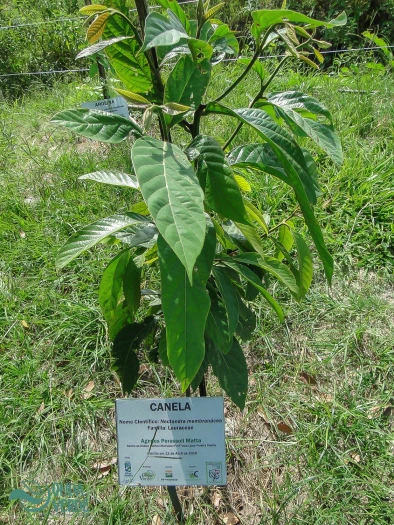Oreja De Burro
(Nectandra membranacea)
Oreja De Burro (Nectandra membranacea)
/
/

© Diogo Luiz
CC BY-SA 4.0
Image By:
© Diogo Luiz
Recorded By:
Copyright:
CC BY-SA 4.0
Copyright Notice:
Photo by: © Diogo Luiz | License Type: CC BY-SA 4.0 | License URL: http://creativecommons.org/licenses/by-sa/4.0/ | Uploader: diogoluiz | Publisher: iNaturalist |



Estimated Native Range
Climate Requirements for Troy, Ohio
| This Plant | Your Site | Plant Suitability for Your Location | ||
|---|---|---|---|---|
| • Precipitation | 23" - 283" | 38" | Aquatic | Aquatic |
| • High Temp. | 57°F - 96°F | 85°F | Your summer temperatures are normal for this plant. | Excellent |
| • Low Temp. | 20°F - 73°F | 18°F | Your winter temperatures may be too cold for this plant | Too cold |
This plant should grow well at your location with about N inches per year (Y minutes per month) of irrigation.
Summary
Nectandra membranacea, commonly known as Oreja de Burro, Laurel, or Canelo, is an evergreen tree native to the wet tropical forests of Mexico, Central America, South America, and the West Indies. It exhibits a moderate growth rate, reaching heights of 15-60 feet (4.6-18 meters) and a spread of 10-20 feet (3-6 meters). This species is characterized by its dense, rounded canopy and glossy, leathery leaves that contribute to its lush appearance. The small, white flowers are not particularly showy, blooming in the spring, but they are followed by purple-black berries that are attractive to birds and other wildlife.
Nectandra membranacea is valued for its shade-providing canopy and is often used in tropical and subtropical landscapes for its ornamental foliage. It is suitable for urban planting, as a specimen tree, or in large garden borders. This tree thrives in a range of soil types, including clay, loam, and sandy soils, provided they offer medium drainage. It requires high amounts of water, making it well-suited to regions with ample rainfall or in irrigated landscapes. While it can adapt to full sun or part shade, it prefers a sheltered position that mimics its native understory habitat. Gardeners should be aware that it may require regular pruning to maintain its shape and prevent the development of weak branches.CC BY-SA 4.0
Nectandra membranacea is valued for its shade-providing canopy and is often used in tropical and subtropical landscapes for its ornamental foliage. It is suitable for urban planting, as a specimen tree, or in large garden borders. This tree thrives in a range of soil types, including clay, loam, and sandy soils, provided they offer medium drainage. It requires high amounts of water, making it well-suited to regions with ample rainfall or in irrigated landscapes. While it can adapt to full sun or part shade, it prefers a sheltered position that mimics its native understory habitat. Gardeners should be aware that it may require regular pruning to maintain its shape and prevent the development of weak branches.CC BY-SA 4.0
Plant Description
- Plant Type: Tree
- Height: 15-60 feet
- Width: 10-20 feet
- Growth Rate: Moderate
- Flower Color: White
- Flowering Season: Spring
- Leaf Retention: Evergreen
Growth Requirements
- Sun: Full Sun, Part Shade
- Water: High
- Drainage: Medium
Common Uses
Bird Garden
Natural Habitat
Wet tropical forests of Mexico, Central America, South America, and the West Indies
Other Names
Common Names: Laurel, Canelo
Scientific Names: Nectandra membranacea, Borbonia membranacea, Laurus membranacea, Nectandra bondarii, Nectandra cuspidata var. macrocarpa, Nectandra cuspidata var. strumosa, Nectandra laevis, Nectandra leucothyrsus, Nectandra membranacea subsp. cuspidata
GBIF Accepted Name: Nectandra membranacea